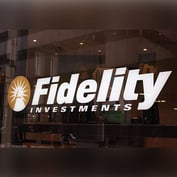Conventional wisdom holds that advisory services are under severe pricing pressure. But our research for Schwab Institutional’s Market Knowledge Tool (MKT) series revealed that major reductions haven’t actually taken place. However, we did find that advisors are being asked to provide more services and more attention for the same fees they charged up to five years ago. As a result, many advisors are experiencing severe pressure on their gross margins, and most will need to reverse this trend to build back up to an optimal level of profitability.
Having evaluated hundreds of advisory practices for both the FPA benchmark studies we’ve done and the Schwab study, we found some common themes in pricing but few common responses. By digging deeper through our data research, we identified three core reasons for the divergent pricing practices in the advisory business:
- The cost basis for services
- Market pricing
- Value proposition
We also found that advisors who consider these three factors when devising their own pricing strategies, are able to develop a more coherent approach to managing their profitability. This principle is just as true for solo advisors as for ensemble firms, and obviously is more relevant to those advisors who are fee-only or run fee-based practices.
The Cost Basis
Recently, we were engaged by a firm that was evolving its wealth management offering. Its origins were in the life insurance and benefits area, so the firm had a strong sales culture in which its principals enjoyed making deals. Unfortunately, as the office manager pointed out, because of these “deals” the firm was losing mon- ey on every new wealth management client it brought in. “With what we’re providing,” she said, “it costs us $15,000 per client in staff time alone–not including the cost of the lead relationship manager.” One of the principals responded: “We can’t charge $15,000 if the market only allows us to charge $10,000!”
Like these principals, advisors are often seduced by attracting more clients, adding more assets, and making more sales, and are less focused on profitability–at least explicitly. There is an unspoken belief that advisors can make it up in volume–that the solution to shrinking margins is to add more clients. Of course, this is only true if the advisors charge those new clients enough to cover their costs or scale down their service offering to match the amount they can charge.
To determine how much each client costs to service, start by adding up all the compensation paid by the firm plus all other overhead such as rent, utilities, and marketing, then divide this by the number of clients. For example, if your total costs are $500,000 and you have 250 clients, your cost per client is $2,000 per client. This gives you a minimum that each client should pay per year to cover your costs. If you have clients that are paying less than this, then unless you truly differentiate the level of service provided, all your larger clients are subsidizing these lower-contribution clients (which is not very fair to your wealthiest clients).
When doing such calculations, I like to suggest that you add a desired profit margin to the minimum you charge each client–in other words, think of profit as a cost that is just as important as salaries and rent. Assume your goal is to achieve a 25% profit margin: divide the average cost per client by one minus the target profit margin, and you’ll get the amount of revenue necessary to charge per client. In the above example, $2,000 ? (1 – .25) = $2,666.
We are often asked to provide insight into how other advisors are pricing their services. Through our studies of the profession, we see many different pricing models but not much coherence on how advisors charge.
For example, in the 2004 FPA Financial Performance Study of Financial Advisory Practices, the difference between the highest and lowest fee charged on a typical $1 million client account was over 150 basis points, with nearly two-thirds falling between 50 and 100 basis points.
However one approaches this, it is almost always best to do the fee comparisons in your local market. What one can justify in Raleigh may be different than in San Francisco, and costs will differ, too.
When doing local competitive analysis, identify which firms are directly competitive, define their service offering, and attempt to compare their pricing in that context. However, advisors should also look at local firms that are not directly competitive in terms of service offering but are competitive in terms of the markets they serve, so that they can be prepared to respond to clients who say, “So-and-so is less expensive.” If, for example, you are a wealth manager, you can demonstrate why your fee structure is different because your value proposition is different. This allows you to move the discussion from cost to deliverable.








 September 01, 2005 at 04:00 AM
September 01, 2005 at 04:00 AM










